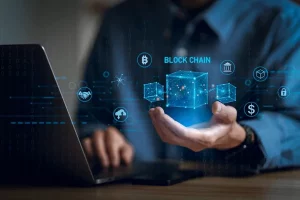What is Lightning Network?
What is Lightning Network and How it Works?
To solve the scalability issue the Bitcoin community has found a solution — Lightning Network
Bitcoin blockchain processes fewer transactions per second (tps) compared to Visa, Solana, Ethereum, Polkdot, MasterCard. While Visa process 5200 tps and is equipped to scale upto 60,000 tps, bitcoin blockchain can process and handle only 7 tps.
To solve this scalability issue the Bitcoin community has found a solution — Lightning Network. It is an altchain that will ensure lightning fast payments. It will work on a new layer created on the bitcoin blockchain — Layer 2. To make matters easy it can be compared to the service road concept on Indian roads, that run parallel to main roads to regulate traffic.
Lightning Network was conceived and developed in 2015.
This technique works on the principle that small and everyday transactions do not need to be stored on the main blockchain. An off-chain network will be developed for this and micropayment transactions will not be broadcast everytime on the main blockchain.
- So when the transaction value is small the amount is deposited in a payment channel specifically created for such transactions
- When party A (node1) has to pay for some purchase to party B (node2), all he will do is make a ledger entry in the payment channel ledger and then both of the parties will endorse the transaction by signing it
- Both parties will keep a copy of the balance sheet so that they are on the same page at all times
- This process can go on multiple times
- By settling off the blockchain the cost of transaction is reduced and transactions are recorded instantaneously
- This payment channel can be closed whenever either party wants. Say if party A wants to close the channel, then he will broadcast the latest ledger of the payment channel to the main blockchain where miners will validate this ledger and check the signatures
- They will then release the funds creating only 1 transaction on the blockchain instead of multiple small transactions thereby reducing the load on the blockchain
- Instead of multiple small transaction there are only 2 transaction necessary for this process, 1 to create the payment channel (transaction fee called as the interaction fee has to be paid to open the channel) and 1 finally to close it (transaction fee has to be paid to close the channel)
- It is not required to open multiple payment channels all the time. A participant can pass the coins around. Continuing with the example, say party A also had a payment channel with party C. Now if party C also has to pay party B then he does not need to open a payment channel, he can pay party A who in turn will pay party B so 1 payment channel less
- The network works to find a solution to create less payment channels. It will work to find out the parties through which the payments can be made without creating new channels thus ensuring lower fees and lesser parties | intermediaries
- An issue here is that if the payment fee is very low then there may not be an incentive for party A to route party C’s payment to party B. Another is that the nodes (parties) have to be online signed in with their private key at all times, rendering them and their coins stored in hot wallet susceptible to theft
- Another issue to address is that a participant needs a Lightning Network compatible wallet
- Lightning Network adds the feature of smart contracts to the bitcoin blockchain
The adoption of this network is on the rise with the number of transaction having doubled year on year in April 2022. As of December 2021, the total value loaded on the Lightning Network was $154.5 million. This is 0.1% of the TVL on Ethereum. Miles to go before we sleep.
For more such knowledge bytes please explore the various courses offered by 3.0 University.



